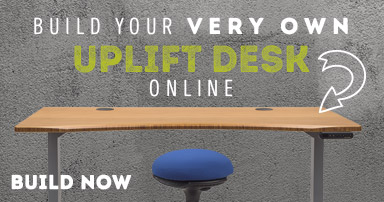Adventures in Applied Ergonomics: Highlights From This Year's Ergo Conference in Dallas
Posted by Human Solution on Apr 3rd 2013
I recently had the pleasure of attending the 16th annual Applied Ergonomics Conference, held in Dallas, and, call me a nerd, but I thought it was really interesting.
It reminded me a lot of being in school; there were presentations on things like “How to Avoid the Top Five Ergonomic Workplace Design Mistakes,” and “Evaluating the Effect of Four Pointing Devices on Upper Extremity Posture and Muscle Activity.” (Spoiler alert! An ergonomic mouse will help you achieve a more neutral position and lessen strain that can lead to musculoskeletal disease!) The various speakers offered such a wealth of information and data that I can’t possibly relay all of it to you here, but I can give you the highlights. Read on!
Day 1
Adjustable height desks are becoming so popular now as an essential part of an ergonomic workstation that, of course, this was a topic of discussion at this year’s conference. For this reason, I was quite interested in attending Texas A&M University Professor Adam Pickens' lecture, “Development of the Ergonomic Tool for Assessing Posture (ETAP).” Dr. Pickens and his team did a study to test the ETAP, which observed elementary school students in class, half of them at traditional sitting desks, and half of them at “stand-biased” desks. The purpose of their study was to determine the usefulness of the ETAP for analyzing posture in both seated and standing positions.
One of the results I found to be most interesting was that, in the controlled classrooms where students had a traditional seated workstations, about 30% of the students stood for some period of time. I found this so interesting because I talk to many customers who have fixed height desks but want to stand while they work, so they will often find creative ways to work standing up before they just decide to convert to a sit-to-stand workstation.
Day 2
When I first perused the schedule of events for the AEC, my attention was immediately caught by one presentation called “Vertical Mice Showdown: The Pros and Cons of Popular Vertical Mice Designs.” Not only did this pique my interest because I am in the business of helping customers determine which vertical mouse might be right for them, but it also just sounded so dramatic! Different models of vertical mice entering a ring, with only one left standing at the end! Of course, it wasn't really like that, and, in these studies, there is hardly ever a simple answer or a clear, single winner.
Several popular vertical mice were tested both against each other as well as compared to a standard “horizontal” mouse while the users performed various tasks like using MS Word or Excel, or surfing the net. As you might expect, the subjects were often quicker and more efficient with a standard mouse at first, because it was what they were used to, but after the initial learning period, the vertical mice started to win out.
Day 3
On the third and final day of the conference, I attended a presentation about adjustable height workstations and how they are actually being used in a real workplace. Standing desks have really taken off in the last year, so the conference attendees didn't wanted to miss this one. It was standing room only! It was a presentation of the results of a pilot study, which observed a group of subjects who had adjustable height desks available to them – in this case they used the older crank style desks – but a lot of the test subjects weren't adjusting them, so they were potentially assuming incorrect postures while standing, sitting or both. This perfectly demonstrates the reason we tend to recommend electric adjustable height desks over crank desks -- if something is difficult to use, people probably just won't use it.
What I really took away from this one was that was that even if someone has great ergonomic tools, without properly adjusting them, they aren't going to provide the intended benefits. Luckily, we have experts on hand who can help you decide which tools to select and how to properly use them.
Learn more about setting up a healthy ergonomic office at TheHumanSolution.com.




